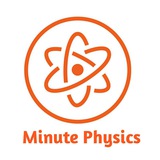THE FOOTPRINTS ON THE MOON WILL BE THERE FOR 100 MILLION YEARS.
Explaination :- The Moon has no atmosphere, which means there is no wind to erode the surface and no water to wash the footprints away. This means the footprints of the Apollo astronauts, along with spacecraft prints, rover-prints and discarded material, will be there for millions of years.
@MinutePhysics
Powered By: Curiosity Tea
Explaination :- The Moon has no atmosphere, which means there is no wind to erode the surface and no water to wash the footprints away. This means the footprints of the Apollo astronauts, along with spacecraft prints, rover-prints and discarded material, will be there for millions of years.
@MinutePhysics
Powered By: Curiosity Tea
The Great Red Spot is a giant, spinning storm in Jupiter's atmosphere. It is like a hurricane on Earth, but it is much larger. Jupiter's Great Red Spot is more than twice the size of Earth! Winds inside this storm reach speeds of about 270 miles per hour.
@MinutePhysics
Powered By: Curiosity Tea
@MinutePhysics
Powered By: Curiosity Tea
This media is not supported in your browser
VIEW IN TELEGRAM
Lasers can get trapped in a waterfall.
Oh my gosh, yes. Not only is this an incredible example of total internal reflection, it also shows how fibre optic cables work to guide the flow of light.
@MinutePhysics
Powered By: Curiosity Tea
Oh my gosh, yes. Not only is this an incredible example of total internal reflection, it also shows how fibre optic cables work to guide the flow of light.
@MinutePhysics
Powered By: Curiosity Tea
This media is not supported in your browser
VIEW IN TELEGRAM
This is what happens when a black hole swallows a star.
As the star gets sucked up into the black hole, a huge jet of plasma is burped out, spanning hundreds of light-years. "When the star is ripped apart by the gravitational forces of the black hole, some part of the star's remains falls into the black hole, while the rest is ejected at high speeds.
@MinutePhysics
Powered By: Curiosity Tea
As the star gets sucked up into the black hole, a huge jet of plasma is burped out, spanning hundreds of light-years. "When the star is ripped apart by the gravitational forces of the black hole, some part of the star's remains falls into the black hole, while the rest is ejected at high speeds.
@MinutePhysics
Powered By: Curiosity Tea
This media is not supported in your browser
VIEW IN TELEGRAM
Wringing Gauge Blocks: two blocks of metal (not magnets!) will stick together by a process called wringing if their surfaces are flat to high precision- such as these gauge blocks found in most machine shops. Here two blocks are forced apart with a snap, and then wrung back together with the characteristic sliding motion technique. Gauge blocks are flat to less that one millionth of a meter and are used by machinists for precision length measurements and calibration. The science of the wring force remains somewhat a mystery and no one has yet found a fully accepted physics description- but we do know that blocks will wring in a vacuum and that the force can be up to 30 times that of weight of the blocks.
@MinutePhysics
Powered By: Curiosity Tea
@MinutePhysics
Powered By: Curiosity Tea
